Lilac
- Scientific name: Syringa vulgaris
- Plant Family: Oleaceae
- Parts Used: Leaves, flowers, fruit
- Medicinal Actions: Vermifuge, Tonic, Febrifuge, Astringent, Aromatic
Medicinal uses are a gray area when it comes to just the flower. Most resources that I have found list that the medicinal benefits of Lilac come from the leaves and fruit.
Lilacs are edible. They symbolize first love and are said to drive away ghosts. They have long been used in both the Eastern and Western healing traditions to fight fevers, treat coughs and calm the stomach. Lilacs are also used by the cosmetic industry for their aromatic and calming effects.
Apparently used as a tea or infusion historically it has been used as a anti-periodic. Anti-periodic basically means that it stops the recurrence of disease such as malaria. There has been some studies that indicate a febrifuge action which may help bring down fever.
Lilac flowers have astringent, aromatic, and perhaps a little bitter qualities. Astringents tighten, draw, and dry tissues such as skin. So a wonderful application would be a cold or warm infusion to use as a toner on the face. Or using the same method but apply to rashes, cuts, and other skin ailments.
An aromatic action causes irritation to the place that it is touching (think GI tract) and irritation brings blood flow and blood flow equals healing! Eating the flowers raw may help with gastric issues such as flatulence or constipation.
In aromatherapy the fragrance of Lilacs is recommended to patients who suffer from chronic depression and anxiety. Lilac blossoms can be added to your bath for a soothing aromatherapy remedy for stress and anxiety.
Synthetic Lilac oil is commonly used in commercial perfumes. however making an herbal infused oil may be a great way to capture the aromatics for healing purposes (see recipe below). It is also wonderfully fragrant. Lilac oil can be applied to the skin for the treatment of various skin problems as rashes, burns and wounds. May also be used as a substitute for Aloes and in the treatment of malaria.
The flowers are edible and have some medicinal qualities. I have to say eating even a single flower raw is a flavor exploding experience with slight astringency (drying to tissues), almost bitter, and very floral. I would say these are best for garnishes and edible flower displays on pastries rather than whole meals.
The plant is administered in the form of herbal tea (a quantity of dried flowers in boiled water, 2-3 times a day). Chewing the leaves is recommended for its astringent action and to improve the sore throat. Folk medicine also recommends chewing the leaves for dyspepsia, flatulence, diarrhea and rheumatism. The herbal tea is used against helminths, malaria, sore throat and fever.
Lilacs were used in Colonial America as a vermifuge (treat intestinal worms), to reduce fevers and to treat malaria. Lilacs steeped in warm spring water for 30 minutes, strained, bottled and refrigerated can be used on the face as a tonic and as a healing spritz for some facial afflictions.
Lilacs have been used to treat diphtheria (both internally and as a gargle). Lilac tea can be used as a hair tonic. Michael Moore indicates that the California Lilac is:
“An excellent home remedy for menstrual cramps, nosebleeds, bleeding hemorrhoids, and old ulcers as well as capillary ruptures from coughing or vomiting.
California Lilac roots are harvested in the late fall when the color is darkest or in early spring before the plants flower. The plants are tough and wiry, the roots even more so, so harvest them while the roots are fresh as after drying, you may need a jack hammer.”
Lilacs steeped in warm spring water for 30 minutes, strained, bottled and refrigerated can be used on the face as a tonic and as a healing spritz for some facial afflictions.
- Lilac Infusion
Pour 2 1/2 cups boiling water over 2 cups (packed) of Lilac flowers, cover and allow to cool. Allow the infusion to sit 8 hours, or overnight. Strain the flowers from the liquid using a coffee filter, you should have about 2 1/4 c. liquid.
Lilac blossoms are natural astringents–they dry things out. Place a cup or two of slightly wilted flowers in a jar, and fill with witch hazel. Allow it to steep for a few days, and then strain out the flowers. Use the Lilac and witch hazel blend as a facial toner, to keep your skin looking healthy and fresh all summer.
Important Note:
There are two other plants that can sometimes be confused with the Lilac. Syringa Baccifera is a synonym of Mitchella repens or Partridge Berry and MUST NOT be confused with Syringa vulgaris.
Also, in Chinese Medicine, there is a plant called Lilac Daphne,(yuán huā). This plant must be used with care and only by experienced herbalists, as parts of it are poisonous. Much of the confusion with those two plants come from the similarity of names. However the Lilac Daphne looks very similar as you can see in the image above.
Lilac Flower Essence
As a flower essence, Lilac floods the body with new vitality and joy. It is helpful for depression, melancholy, and low energy due to a lack of self-connectedness. The essence helps us to relax and to find peace within nature. It rejuvenates and uplifts.
Lilac flower essences lifts the burdens of life for those who refuse to allow help from others. It restores the lightness of laughter within the soul and eases painful memories of the past. Ultimately, Lilac is a flower of joy, beauty, and vitality.
Lilac Scented Oil
Lilac essential oil is currently only available in a synthetic version. It is, however, possible to make your own. It can be made by infusing Lilac blossoms in oil.
For this, it is best to choose an oil that has minimal fragrance of its own, as you don’t want it to overpower the Lilac scent.
Fill an airtight jar with dry Lilac flower petals, and then cover with the oil. Let the petals steep in the oil for three days, shaking the jar occasionally, keeping the jar in the sun in the daytime and in a warm cupboard at night.
Strain out and discard the petals, using a cheesecloth or a non-metal sieve. Retain the oil. Refill the jar with more fresh, clean, and dry flower petals and cover them with the reserved oil.
Allow the petals to steep as before. Repeat the straining and refilling until the oil has the desired intensity of fragrance.
Store in a cool dark place and use promptly. Vitamin E can be added as a preservative. Pierce one capsule of Vitamin E and add the contents to every cup of infused oil. Alternatively, 1/4 teaspoon of simple tincture of benzoin may be added per cup of infused oil.
Lilac oil can be used to treat rashes and sunburn, minor injuries and scrapes. It is a great skin tightening agent and toner. And the scent is great for easing anxiety.
Habitat and Cultivation
Syringa vulgaris (Lilac or common Lilac) is a species of flowering plant in the olive family Oleaceae, native to the Balkan Peninsula, where it grows on rocky hills. Grown for its scented purple flowers in spring, this large shrub or small tree is widely cultivated and has been naturalized in parts of Europe and North America. It is not regarded as an aggressive species, found in the wild in widely scattered sites, usually in the vicinity of past or present human habitations.
The Lilac is a very popular ornamental plant in gardens and parks, because of its attractive, sweet-smelling flowers, which appear in early summer just before many of the roses and other summer flowers come into bloom.
This deciduous shrub grows to 6 m (19ft 8in) at a medium rate, and is hardy to zone 5 in the UK. It is in flower in May, and the seeds ripen in August. The species is hermaphrodite (has both male and female organs) and is pollinated by bees, moths, and butterflies. It is noted for attracting wildlife.
Lilacs are not too particular about the soil, they can be grown in light (sandy), medium (loamy) and heavy (clay) soils and heavy clay soil. They prefer a moist soil, and do not do well in shade.
In late summer, Lilacs can be attacked by powdery mildew, specifically Erysiphe syringae, one of the Erysiphaceae. No fall color is seen and the seed clusters have no aesthetic appeal.
Common Lilac tends to flower profusely in alternate years, a habit that can be improved by deadheading the flower clusters after the color has faded and before seeds, few of which are fertile, form. At the same time, twiggy growth on shoots that have flowered more than once or twice can be cut to a strong, outward-growing side shoot.
It is widely naturalized in western and northern Europe. In a sign of its complete naturalization in North America, it has been selected as the state flower of the state of New Hampshire, because it “is symbolic of that hardy character of the men and women of the Granite State”.
Additional hardiness for Canadian gardens was bred for in a series of S. vulgaris hybrids by Isabella Preston, who introduced many of the later-blooming varieties. Their later-developing flower buds are better protected from late spring frosts. The Syringa × prestoniae hybrids range primarily in the pink and lavender shades.
Varieties
Horticulturists have cross bred the 28 species of Lilac so extensively that even the experts sometimes have trouble telling Lilac plant types apart. Even so, some species have attributes that might make them better suited to your garden and landscape. Here are some different types of Lilacs:
- Common Lilac (Syringa vulgaris) – For most people, this Lilac is the most familiar. The flowers are Lilac-colored and have a strong fragrance. Common Lilac grows to a height of about 20 feet (6 m.).
- Persian Lilac (S. persica) – This variety grows 10 feet (3 m.) tall. The flowers are pale Lilac in color, and about half the diameter of common Lilacs. Persian Lilac is a good choice for an informal hedge.
- Dwarf Korean Lilac (S. palebinina) – These Lilacs grow only 4 feet (1 m.) tall and make a good informal hedge plant. The flowers resemble those of common Lilac.
- Tree Lilacs (S. amurensis) – This variety grows into a 30-foot tree with off-white flowers.
- Japanese tree Lilac (S. amurensis ‘Japonica’) is a type of tree Lilac with unusual, very pale yellow flowers.
- Chinese Lilac (S. chinensis) – This is one of the best varieties to use as a summer screen or hedge. It grows quickly to reach a height of 8 to 12 feet (2-4 m.). Chinese Lilac is a cross between common Lilacs and Persian Lilacs. It is sometimes called Rouen Lilac.
- Himalayan Lilac (S. villosa) – Also called late Lilac, this type has rose-like blossoms. It grows as tall as 10 feet (3 m.).
- Hungarian Lilac (S. josikaea) is a similar species with darker flowers.
Keep Flowers Fresh Longer
Keep flowers fresh longer: Cut and strip off the bark then bash in the bottom stalk (up to 1-2 inches) this opens up the woody structure enough for water to be more easily taken up and will help keep the flowers fresh for weeks.
Magickal Uses
- Part used: Fresh flowers
- Planet: Venus
- Element: Earth
- Magickal Influences: Love and Purification
This is the flirt flower. It attracts love quickly although the love it brings often doesn’t last for long. Wear the fragrance or bathe in fresh Lilacs when you want a fling. This flower is for fun. It is a great scent to spray in a room before parties or before meeting a date who is taking the relationship too seriously. Lilac keeps things light.
Inhale the aroma rising from the light purple flowers for internal purification. To cleanse a home, place jars of the fresh flowers in several rooms. Bathe in Lilac dew on May Day for a year of beauty.
The scent of fresh Lilac flowers was once thought to drive away ghosts.
The scent of Lilacs enhances a child’s educational aptitude. Here are a number of ways to use it:
- Place a drop of Lilac fragrance oil on a light bulb near where a child studies.
- Place a vase of fresh Lilac blossoms on the child’s desk so that the fragrance wafts over the child while studying.
- Place a table and chair outside next to a Lilac bush in bloom and send the child outside to study.
Like many flowers, Lilacs can be utilized in love expansion rituals. The sweet fragrance of these seasonal blooms brims with loving energies.
In aromatherapy the fragrance of Lilacs is recommended to patients who suffer from chronic depression and anxiety. Lilac blossoms can be added to your bath for a soothing aromatherapy remedy for stress and anxiety.
No true Lilac essential oil is currently available, however Lilac scents are available. They are said to bring peace and harmony. Also believed to induce “Far Memory” or the ability to remember past lives. It is also useful for inducing clairvoyant powers in general.
Lilac oil reputedly repels vampires and is certainly more fragrant than garlic. Most of the Lilac oil that is commercially available is synthetic; presumably vampires can tell the difference. If you make your own, the lingering aroma should keep the vampire out of the house as well.
A recipe for how to make your own Lilac oil can be found here: Oil of Lilac
The Lore of Lilacs
Lilacs have a deep rooted history originating in ancient Greek mythology. It was said that Pan, the god of forests and fields was hopelessly in love with a nymph named Syringa. One day he was pursuing her through a forest and, afraid of his advances, she turned herself into a lilac shrub to disguise herself. To Pan’s surprise, he could not find Syringa, but he did find the shrub.
Because a lilac shrub consists of hollow reeds, he cut the reeds and created the first pan pipe. The scientific name for lilac is Syringa vulgaris, and the name is derived from the Greek word “syrinks” which means pipe.
The common name, lilac, was borrowed from the French and Spanish word of the same name. Similarly, the Arabic word for this flower is “lilak”. The word lilac refers to the light purple color of its flowers.
The trees were respected by Orthodox Christians and the plant’s Greek name “pashalia” is derived from “pasha” which in Jewish means “passage” as they were considered to drive ghosts away instantly. The Lilac tree is also linked with reincarnation.
One of the plant’s secrets is that the flowers do not fade under hot water. Lilacs are said to remove ghosts, aid the exploration of past lives, and bless the passages of life, both birth and death. Purple Lilacs are the symbol for the first emotions of love. If the blossoms are strewn about it is said they can ward off evil.
Lilacs have a history of promoting clairvoyance, divination, peace, harmony and creativity. Lilac tonics were probably first introduced in Henry 8th time. They are called a harbinger of spring. White Lilacs are a symbol of innocence.
In some parts of England, it is considered unlucky to bring Lilac, especially white Lilac, into the house. The purple and red varieties are usually less feared, but even they are sometimes excluded from house decorations as bringers of misfortune.
In the 1960’s, a florist in Oxford England strongly advised a customer not to buy white Lilac for a friend in the hospital on the grounds that many people thought it foretold death if brought indoors. He did not know why this should be so, only that it was quite commonly believed. In fact it is almost certainly due to the widespread association of death and misfortune with “drowsy-scented” flowers, and also with those which are white.
An interesting detail about the Lilac tradition is that it is found only in some English districts, especially in the midland counties, and quite unknown elsewhere.
It is lucky to find a five-petaled Lilac blossom of any color. Along the Welsh border, Lilac trees are said to mourn if any of their kind are cut down, and to be flowerless in the following year.
From the Cincinnati Enquirer 1 August 1900, we have this fun little tidbit:
“She who wears the Lilac will never wear the wedding ring,” runs the old proverb, and although the scent of the flower is sweet and its tints are fresh and universally becoming it is contraband among the village maidens in England.
A single boutonniere of Lilac has been held responsible for solitary spinsterhood. For the same reason mothers with marriageable daughters never allow a jug of the sweet smelling blossoms inside the house. It may stand on the outside window sill, but “there’s no love luck about the house” when there are Lilacs in it.
To give one’s sweetheart a spring of the flower is the death blow to the most secure of engagements. White Lilacs are even more fatal to love affairs than the colored ones; they are, in fact, as ominous as an opal ring. Love, however, laughs at artificial flowers, and only the real tree grown one can come between the lover and his lass.
Stony-hearted bachelors sometimes sport a Lilac boutonniere as a charm against feminine blandishments. Londoners do not share the superstition, and use the flower freely for decoration, regardless of the unlucky attributes.
The meaning of the lilac flower has diversified throughout the ages. Lilacs originated in Southeastern Europe and are a popular part of the Mediterranean culture. They are frequently associated with the Easter holiday, which occurs during the peak of its bloom time.
Lilac meanings vary throughout different cultures and time periods.
- The Celtics regarded the lilac as “magical” due to their incredibly intoxicating fragrance.
- During the Victorian Age, the giving of a lilac was meant to be a reminder of an old love. In fact, widows were often seen wearing lilacs during this period.
- In Russia, holding a sprig of lilac over the newborn would bring wisdom.
- In the United States, the lilac is the official state flower of New Hampshire and represents the ‘hardy’ nature of its people.
Because lilacs have one of the earliest bloom times, they symbolize spring and renewal. Lilacs also symbolize confidence, which makes them a traditionally popular gift for graduates. There are many meanings that lilacs have that can best be classified by color.
- White lilacs symbolize purity and innocence.
- Violet lilacs symbolize spirituality.
- Blue lilacs symbolize happiness and tranquility.
- Magenta lilacs symbolize love and passion.
Lilac, the color for which this flower is named, is a light purple that symbolizes a first love.
Although various colors of lilacs have different meanings, the lilac has always had a strong association with love and romance throughout history.
Dreaming About Lilacs
Lilac in a dream is a sign of future changes in personal life, the anticipation of big feelings and an exciting love affair.
- White lilac personifies purity, sincerity, sensuality, the birth of affection.
- Violet lilac is a longing for love experiences, yearning of the heart; awakening of romance.
To dream of a blooming lilac is a sign of positive emotions, receiving pleasant news or surprise.
Standing under lilac bush in a dream promises a person a frivolous sexual adventure, which will very quickly exhaust itself, and feelings will evaporate before they turn into something serious.
Miller’s dreambook positioned dreams about lilac mainly as a good sign, foreshadowing love experiences, romance, a surge of sensuality. Flowering lilac shrub reflects the kind and open attitude of people around them to the dreamer, trust and sympathy. Tearing lilac shows a greater likelihood to achieve the desired.
A bouquet of lilac is a sign showing opportunity to find something new about your beloved person, to have sincere conversation. The image promises a romantic acquaintance for single people, but this union will not be long-lasting.
For people who have been married for a long time, a bunch of lilac flowers speaks about the revival of long-forgotten romantic feelings between spouses – sexual desire will be restored and a seemingly past, withering passion will appear.
Some dreambooks interpret ambiguously dreams of a lilac branch. To see a torn off branch in a dream is a symbol of illusion, deceptive hopes that will never be realized. One should beware of strangers who sincerely offer friendship at first glance. To see the blossoming branch of a lilac bush from a window in a dream promises pleasant pastime and an unexpected gift.
To see lilac in a dream and feel its scent means an extraordinary, almost mystical attraction to a person of the opposite sex. Dream interpretation advises not to succumb to this feeling (which will be very difficult to do), because the fruits of such intrigues will remind of themselves more than once, and can easily ruin the life of even the most self-confident person.
If the dreamer happened to pick the fragrant lilac in a dream, it means he will attract close attention of a person whom he likes for a long time.
To dream of a lilac flowers represents feelings about how beautiful it is to notice never fearing a sense of accomplishment in something that isn’t dependent on anything else. A sense of accomplishment in something that nobody else wants to do that always cares about your feelings. Feeling good noticing yourself successful from being self taught. Feeling good about your children having grown up to be independent never needing you for anything.
Lilacs As Food
The Lilac flower is edible and can also be crystallized and used as candy on cookies, cakes and pies, or simply be added to brown rice and salads. Sorbet can be made by mixing the flowers with sugar and water. Flowers can be used raw or folded into batter and fried to make fritters.
You can mix Lilac blossoms with honey, and yogurt to create a stylish dessert. Create a special drink by mixing sugar and water with Lilac flowers. You can find a number of Lilac blossom recipes here: Eating To Live.
Candied Lilac flowers are easily made by brushing them with beaten egg white and sprinkling them with superfine sugar. This was a time consuming process, and should be done on a dry day. The results are pretty, and should make a lovely addition to a cake or cupcakes.
Lilac Honey
Fill a jar (1/2 pint, pint, quart etc.) with freshly picked flowers with a little room at the top. Pour over honey to the top and cap. Allow to infuse for at least 6 weeks. No need to strain afterwards – eat the flowers along with the honey! Great for adding to recipes, spreading on bread, or adding to teas.
Note: Always use raw, unfiltered honey. Use local honey whenever possible.
Lilac Syrup
Pour over pancakes, add as a liquor base, or a nonalcoholic lemonade base. I froze the extra syrup in mason jars to keep year round. It is quite simple to make:
- 1 cup of water
- 1 cup of sugar
- 1 cup of Lilac flowers (stems and green parts removed)
Combine the water and sugar over medium heat on the stove. Heat until dissolved. Add the Lilac flowers and simmer for 10 minutes. If you want a brightly hued syrup, add about five blueberries. The color will pop and add a great dimension to your cocktails. Remove from heat, drain through a sieve, bottle, and store in the refrigerator.
Lilac Sugar
How easy is this?
All you need is equal parts fully opened Lilac blossoms, green stems removed, and granulated sugar.
Blend in a food processor till the blossoms have completely broken down. The finished sugar will be moist due to the moisture content of the fresh blossoms, so lay out the sugar on a parchment lined baking sheet and let them air dry.
You can speed up the process by heating the oven to 200 F, placing the baking sheet on the center rack, and then turning off the heat. In no time the sugar will be dried out. It will be a tad clumpy, so just give it another whiz in the food processor. Or you can just do so by hand using a mortar and pestle.
Et voila, the most fragrant sugar you will ever come across! Even as it was drying out in the oven, the kitchen was already taking on a lovely perfume. I had enough for my pie, as well as for tea for the next little while! I also added a few crushed Lilac petals to the ground sugar, just for color and added texture.
Other Uses and Info
The Lilac is noted for attracting wildlife. You can use Lilac as an attracting tool for animals. Lilac bushes provide safe nesting places, and in turn, the birds will feed on insects that invade your garden.
Butterflies and bees are attracted to Lilacs, and also work to help pollinate other garden plants.
You can also use Lilac as a distracting tool. If deer are the problem in your area, then use the Lilac bushes around your garden to distract them from your yummy veggies… I have no idea if this actually works or not, but if you like to see deer in or around your green space, Lilacs might provide cover, food, and an incentive to visit.
- The lilac is the official flower of a couple’s 8th wedding anniversary.
- Lilacs have one of the shortest bloom times and only flower for three weeks at the beginning of spring.
- Both George Washington and Thomas Jefferson had an affinity for lilacs and grew them in their gardens.
Lilacs have been a source of inspiration for artists throughout history. Impressionists Vincent Van Gogh and Claude Monet both have famous works depicting the beauty of lilacs in their paintings.
American poet Walt Whitman, uses the lilac in his famous poem, “When Lilacs Last in the Door-yard Bloom’d”, as a symbol of life after death in a narrative depicting Abraham Lincoln’s last days.
Sources:
- A Modern Herbal by M Grieve
- Magical Aromatherapy
- The Practical Herbalist
- Holly and Flora
- White Rabbit Institute of Healing
- University of Ioannina
- Food 52
- The Encyclopedia of Superstitions
- Encyclopedia of Magickal Ingredients
- Magical Herbalism
- Element Encyclopedia of 5000 Spells
- FTD by Design
- Mrs Daffodil Digresses
- Wikipedia
- Gardening Know How
Vincent: Mulberry
Rennie Luttrull: queen-annes-lace-seeds
Rosanna: Spignel aka Bald Money
Annamarie Squatrito: Fumitory
EILEEN Klinghagen: Pumpkin
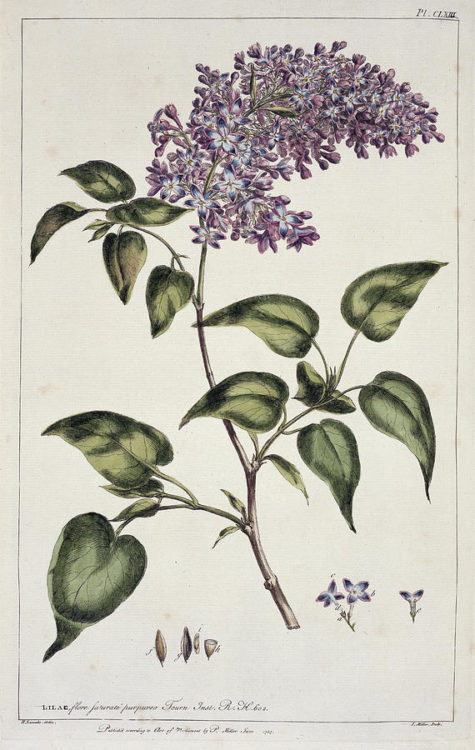

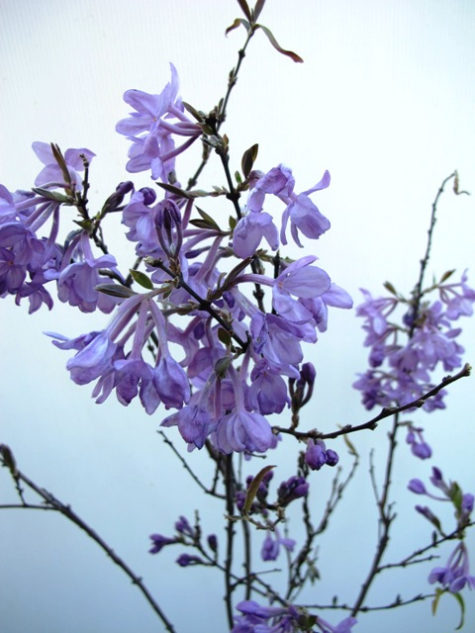
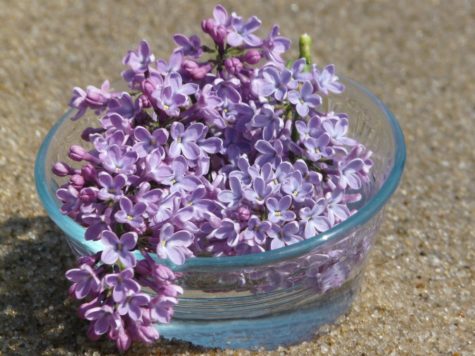
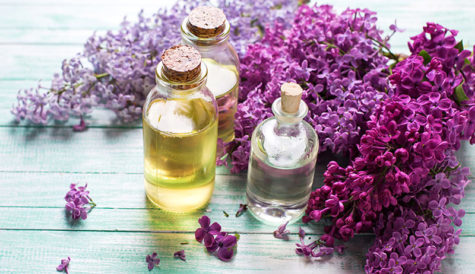
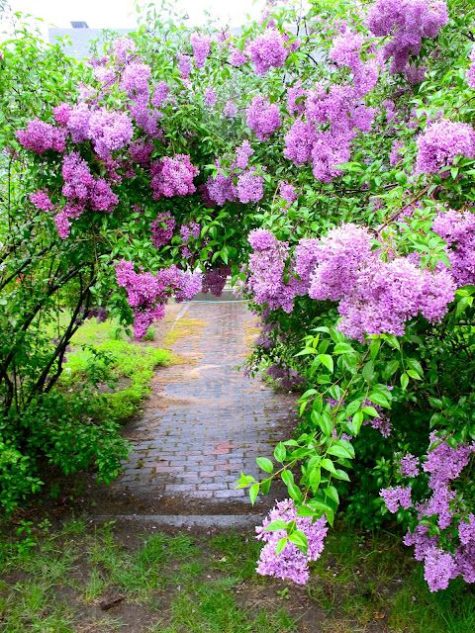
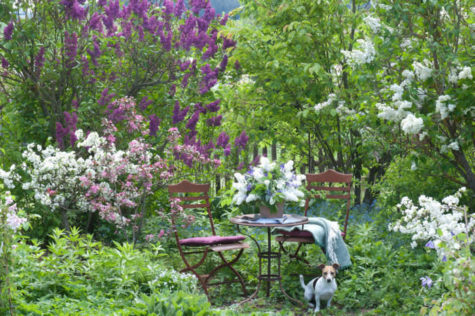
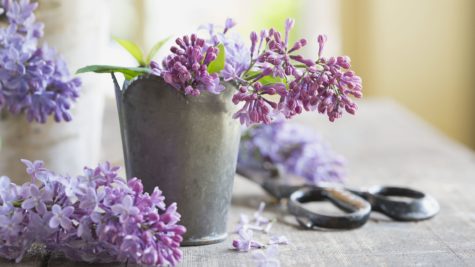
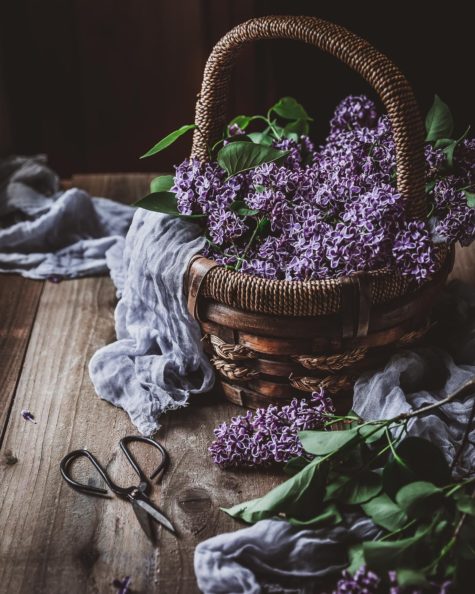
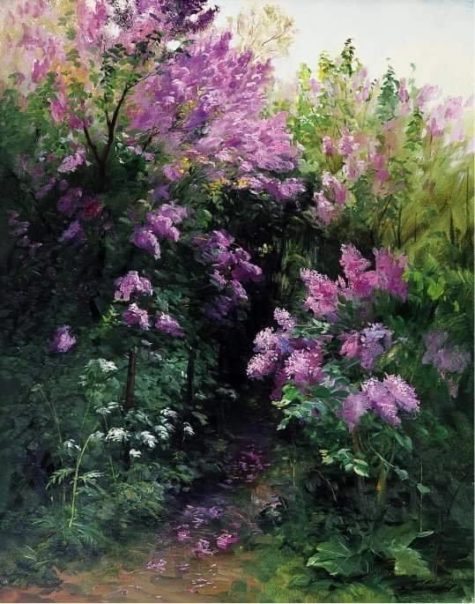

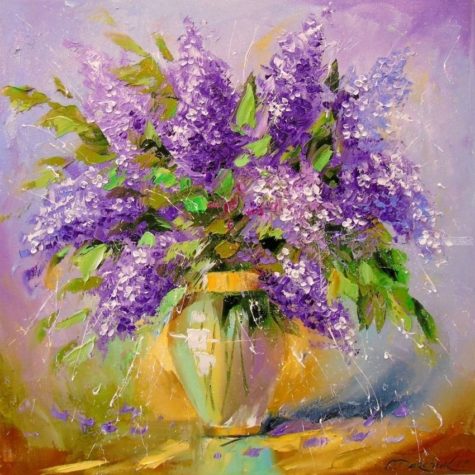

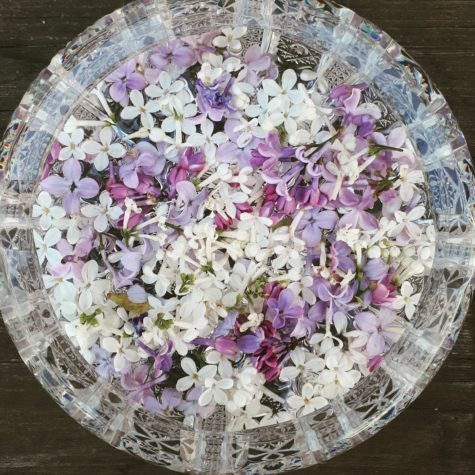
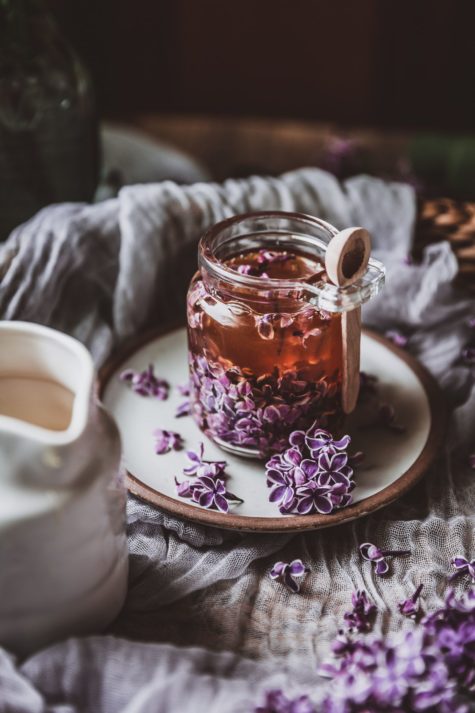
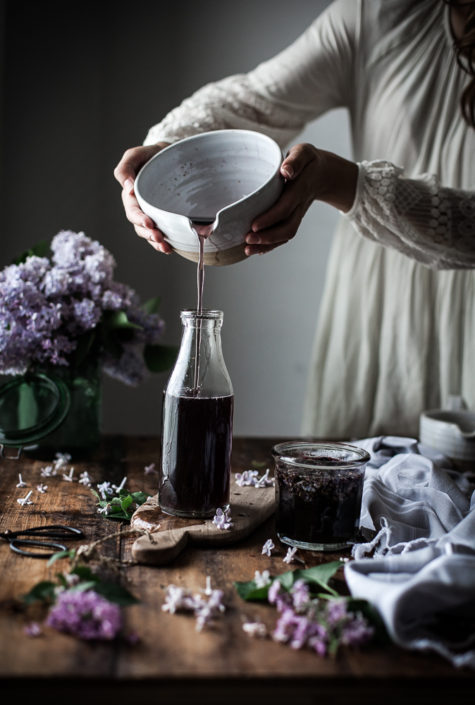
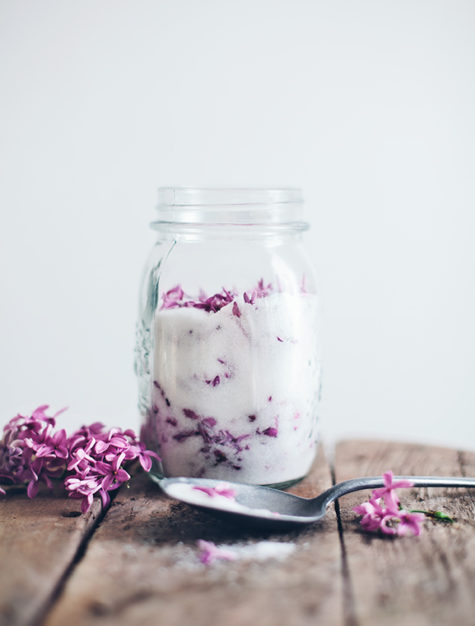
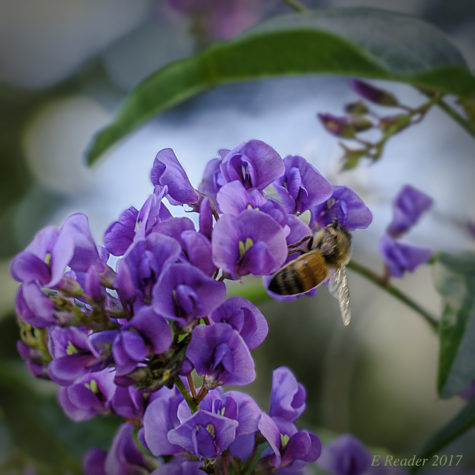
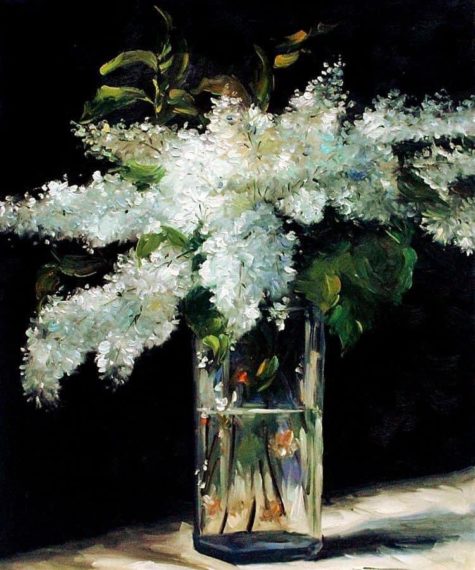


Leave a Reply